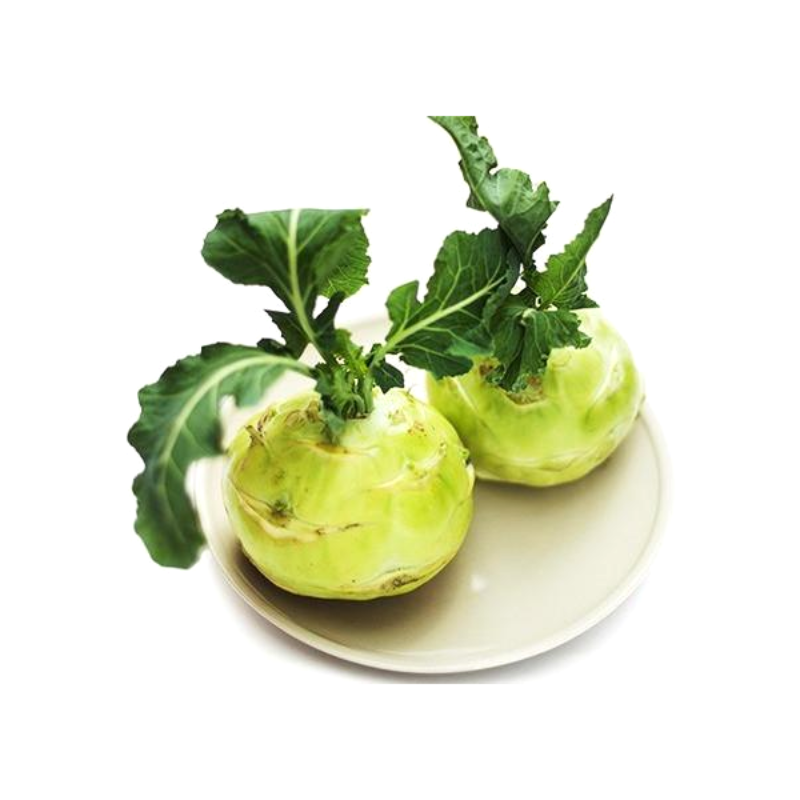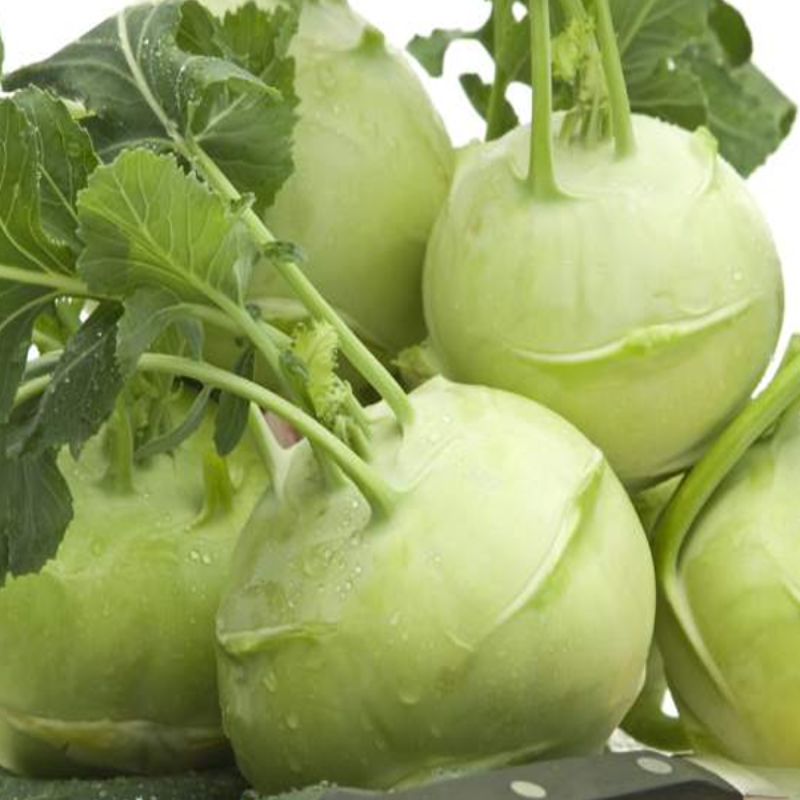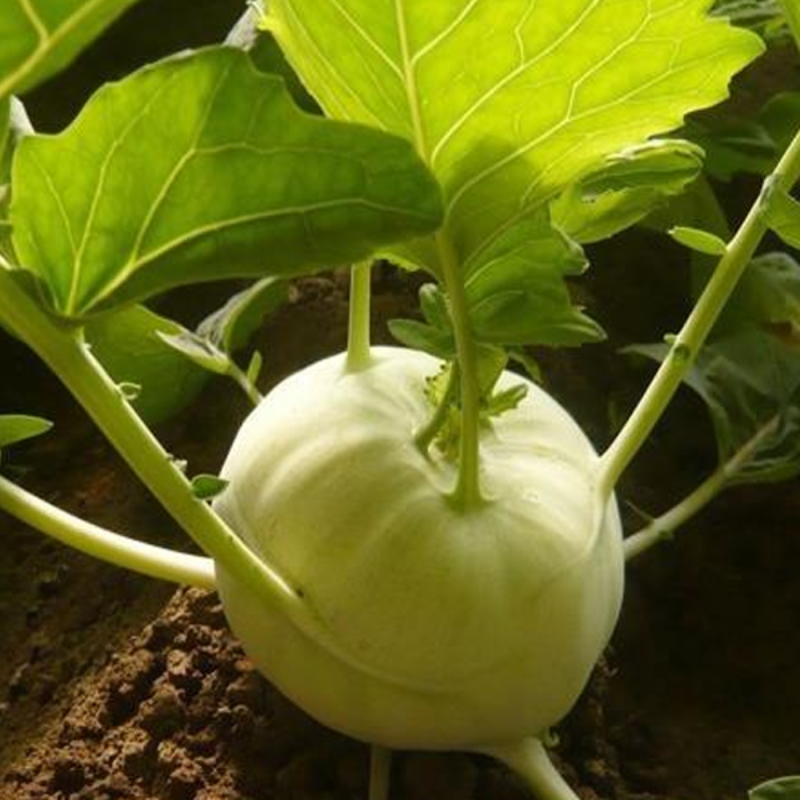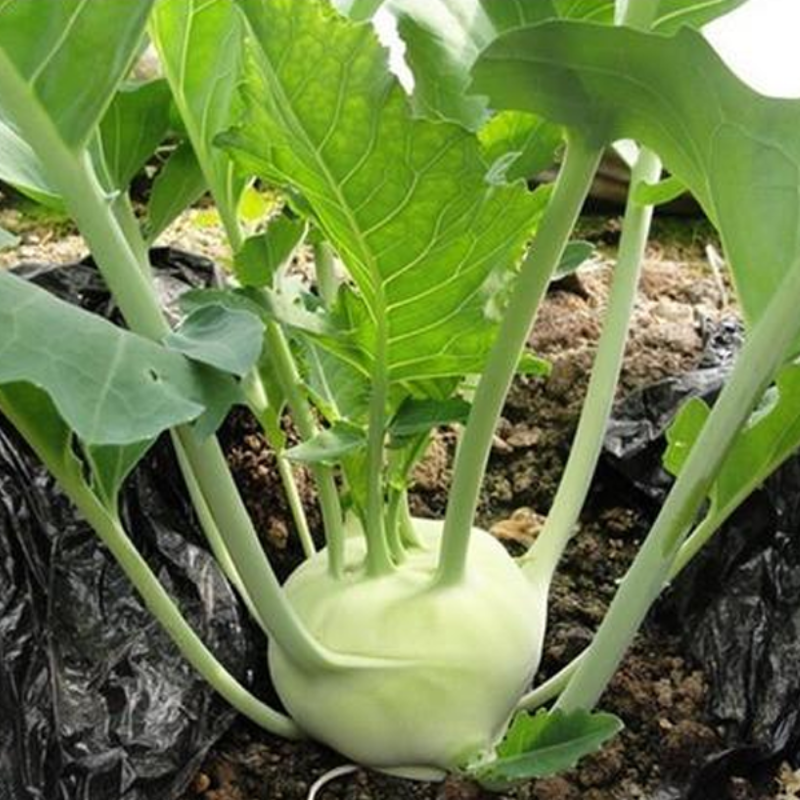- Species and varieties: Green kohlrabi (Brassica oleracea var. gongylodes) is a member of the Brassica family, which also includes cabbage, broccoli, and kale. There are several varieties of kohlrabi, including 'Early White Vienna' and 'Purple Vienna'. Green kohlrabi is known for its bulbous stem and mild, sweet flavor.
- Hybrid or heirloom: Green kohlrabi seeds can be found in both hybrid and heirloom varieties. Heirloom varieties are open-pollinated and have been passed down through generations, while hybrid varieties are bred for specific traits such as disease resistance and uniformity.
- Pruning and training: Green kohlrabi does not require extensive pruning or training. However, it is important to thin seedlings to ensure proper spacing, which helps prevent overcrowding and promotes healthy growth. Remove any yellowing or damaged leaves to maintain plant health.
- Fertilization needs: Green kohlrabi benefits from a balanced fertilizer applied at planting and again when the plants are about halfway to maturity. A fertilizer with equal parts nitrogen, phosphorus, and potassium (such as a 10-10-10 formula) is recommended. Organic options like compost or well-rotted manure can also be used to enrich the soil.
- Hardiness zones: Green kohlrabi is suitable for growing in USDA hardiness zones 3-10. It is a cool-season crop that can tolerate light frosts.
- Climate requirements: Green kohlrabi thrives in cool weather and is best grown in spring and fall. It prefers temperatures between 60-75°F (15-24°C). In warmer climates, it can be grown in the winter months. Consistent moisture and well-drained soil are essential for optimal growth.












